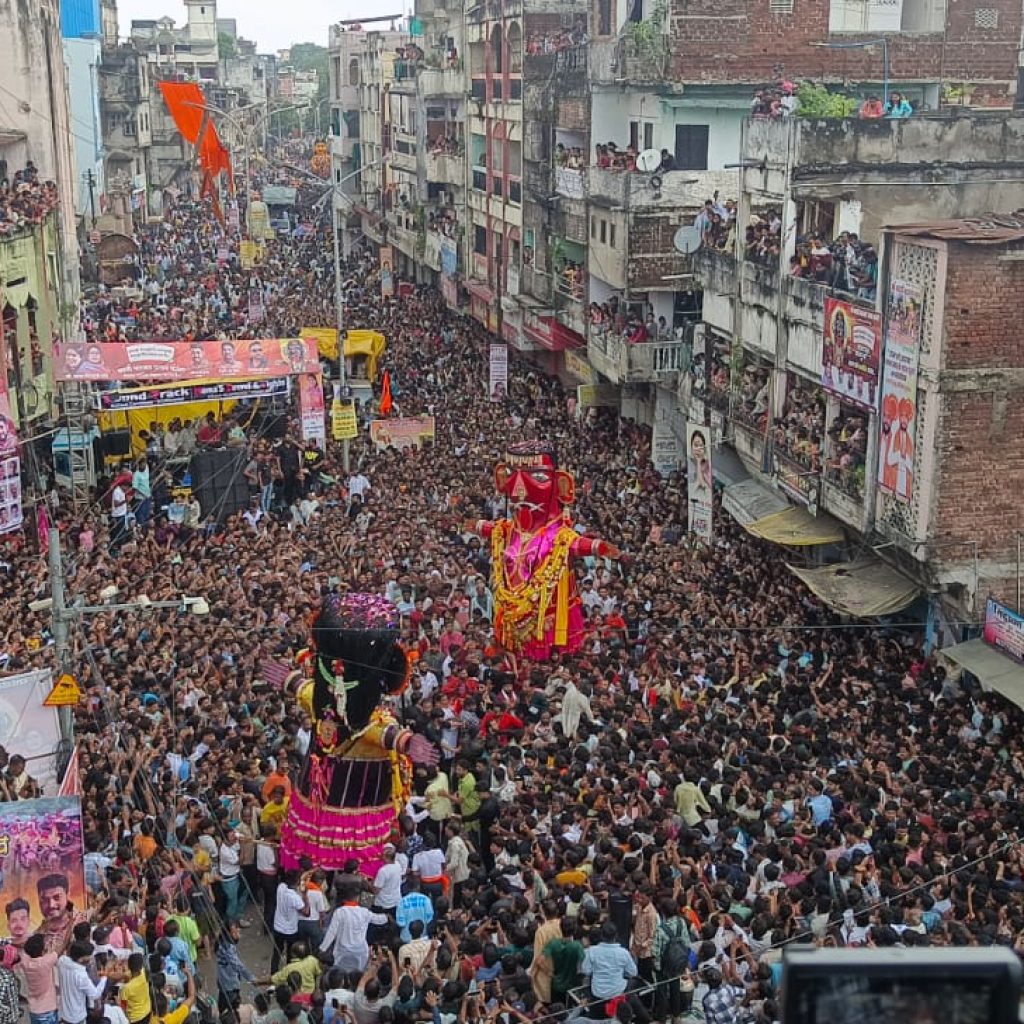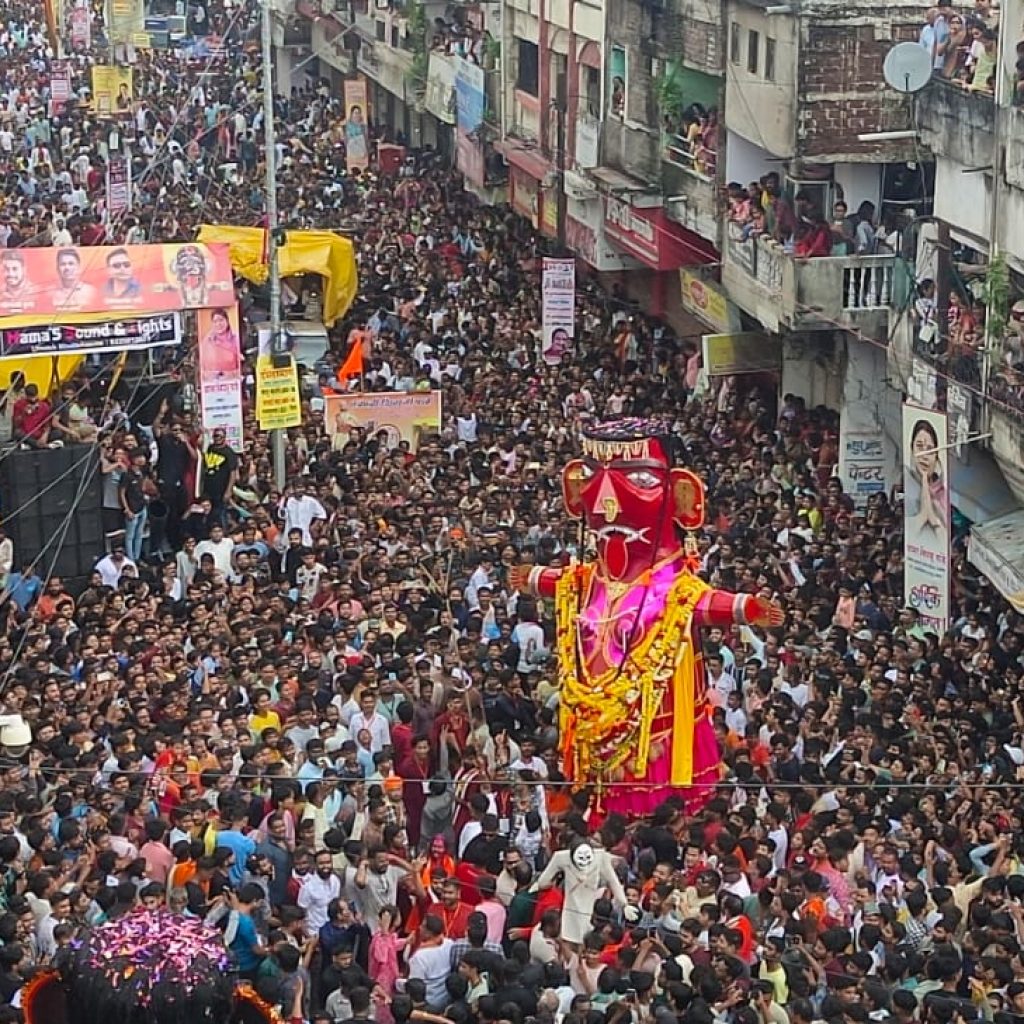As per tradition of the 144-year-old festival marked by religious fervour and zeal which is celebrated only in Nagpur, devotees take out a procession carrying effigies that represent evil forces.
The effigies or ‘Marbats’ of Kali (black) and Pivli (yellow) are the main attractions of the procession, which are burned by the locals.

It is believed that these statues absorb the negativity and social evils when they are taken through the streets and the organizers often outline different social and national issues through this festival.
Every year, around September, the Nagpur breaks out in revelry to celebrate a 143-year-old festival where massive effigies symbolising evil are paraded through the streets, to the accompaniment of loud music, dancing and chanting, and then burnt.

The Marbat festival falls on ‘Tanha Pola’, the day after Pola when people in rural Maharashtra express gratitude to their bulls for their contribution to their farming activities. Gigantic female effigies or Marbat traverse the narrow streets of Nagpur’s old city, from the sites where they were created to Nehru Putla Square.
The Kali (black) Marbat stands in wait even as hundreds of revellers throng the area, shouting, “Ida pida gheun jaa ge Marbat (Take away all evil and go, Marbat)…Rog rai gheun jaa ge Marbat (Take away all diseases and go, Marbat)”.
The three main narratives that drive the origin of the Marbat festival. One suggests that the festival dates back to the peasantry in the region. A lot of clay dolls are placed in the households on the day of Pola, and on Tanha Pola, these idols along with Palash branches are burned at city crossroads or outside the house. It was especially the farmer community that followed this ritual to deal with insects and unwanted evil. Another narrative involves the Kali Marbat representing Nagpur Queen Baka Bai of the royal Bhonsles, symbolising the anger of the people at her surrender to the British. The Kali Marbat is also believed to symbolise Putana,” he adds, referring to the demoness who tried to kill Lord Krishna with poisoned milk. The third narrative links the Pili Marbat to British rule.
👉 Click here to read the latest Gujarat news on TheLiveAhmedabad.com



